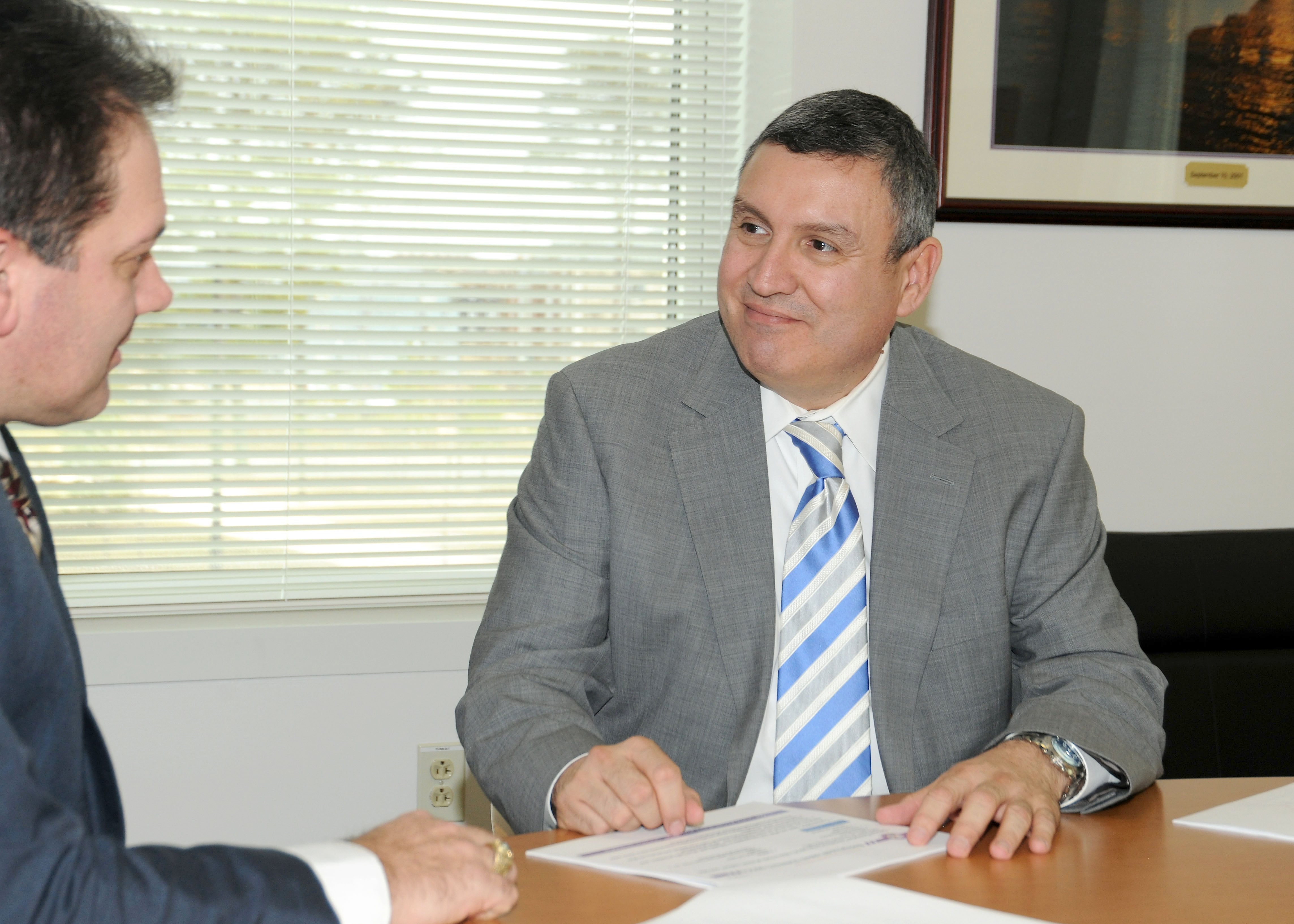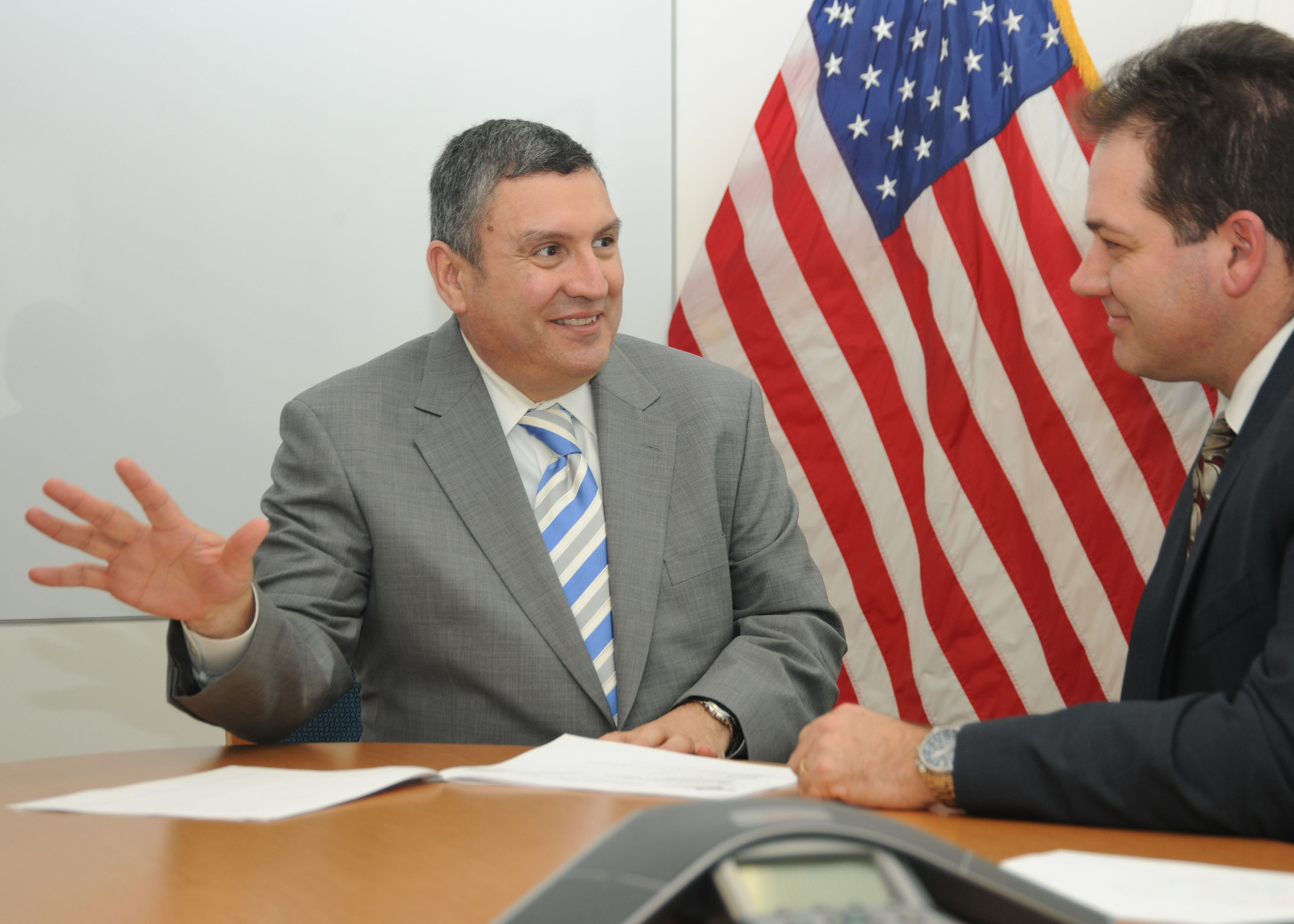With the recent reorganization of the Defense Information Systems Agency, Alfred Rivera has taken on a new leadership role overseeing the agency's newly established business and development center. In his new job Rivera plays a pivotal role in how DISA provides services to Defense Department components and users; at the same time, he's spearheading the organizational changes underway at the agency. Rivera recently talked about what his new office does, how things are changing at DISA and what it means for DoD's future.
C4ISRNET: The reorganization put you in charge of a new business and development center. What does this office do?
ALFRED RIVERA: It's the front end of the whole life cycle development process, if you think of it from that perspective. You can divide it into four major chunks as part of the overall life cycle.
There's the front-end customer engagement and requirements process; within the organization I have a mission-partner engagement office that works closely with each of our mission partners in understanding the requirements, understanding what their needs are and their desires, as well as providing them descriptions of what DISA capabilities can offer.
As part of that same front end, we have a requirements analysis office that takes in requirements from our mission partners or the Joint Staff or whomever, and they can say to us, 'DISA, we'd like you to think about doing some kind of capability.' And we kick in those requirements and do the due diligence of evaluating the requirement — can it be solved by our current abilities or is it something that's new to our biz and should we pursue it as a new offering? That's front end.
The next piece is the handoff to the engineering office. [That's where we answer], can this be done; is there technology to support these capabilities that the mission partner wants? Is there some innovation that we should be pursuing and looking at to solve some of these challenges coming from our mission partners?
Once that analysis is done, it's handed off to a third piece of pie, the program management offices. The infrastructure development and service development group are in essence our program managers that actually deal with these capabilities. So we have two select groups that do that ... those are in essence the program management efforts being done in the agency that fall under those two umbrellas.
The final piece is testing and evaluation. Underneath me I have those folks that do the operational testing, the interoperability testing, the performance testing, all under the testing and evaluation organization as well as the Joint Interoperable Test Command. Before we hand off any program, all those functions to be done before we hand of to the sustainment organization to run it — it all happens in the business and development center.

DISA's Alfred Rivera says SETI will provide an enterprise engineering contract vehicle rather than multiple isolated programs.
Photo Credit: DISA
C4ISRNET: What are some of the capabilities you're working on now and moving through these organizational pieces?
RIVERA: An example of something we're wrestling with right now, if you think about where we're going with cloud, is large data. How is DISA going to support large data-type requirements that mission partners are asking about? So we're doing analysis on big data capabilities that would potentially support partners like the Air Force and the National Geospatial-Intelligence Agency. So that's an example of new capabilities partners are asking us to look at, and we're looking at how we can support that.
C4ISRNET: What's changed under the reorganization at DISA? What are some of your responsibilities?
RIVERA: The restructuring puts an accountability on the whole front end of capabilities for DISA under one organization. Originally it was different parts of the organization that would receive requirements. Our mission partners would engage different parts of the organization; now you have one single organization accountable for that. It helps streamline the process, helps send capabilities in the right location so we can be more agile and get capabilities out more quickly.
Mission partners who are looking for new capabilities or services go to one group dedicated to customer engagement and understanding requirements. There's one organization receiving, documenting and cataloging requirements, doing the due diligence. One organization is doing the engineering and the program management. And that's critical to mission partners to provide speed and agility in getting something out more quickly.
That's probably one of the biggest windfalls of this reorganization — centralizing mission-partner engagement and having one that focuses on understanding the customer and what they need. That's the biggest change with respect to the reorganization and with respect to the culture. You don't have to use your old Rolodex of DISA people you know; now there's an organization dedicated to working with you and understanding your requirements and needs and seeing that back into the process. That's important from an external as well as internal process perspective.
C4ISRNET:What are some challenges you're facing now? What are you excited about?
RIVERA: We've changed a whole culture in DISA with this reorg, so it's making sure everybody understands where we want to take this new vision of our reorganization. People who were familiar with old ways of doing business, it's changed, so having them adopt the new way is a challenge. Thinking about how we receive business a new way is a challenge.
I try to explain why this new way of doing business is better ... and that we need to adapt to a different process. It's not the old DISA anymore. We have expanding roles in the functions and services we're doing, so we can't just continue to be an organization that was familiar with a finite set of capabilities and services. In order for us to adopt new things and services, we had to change the way we thought about receiving workloads. And we didn't do this in a vacuum; we talked to industry leaders and asked them if it makes sense. We validated this with industry leaders and organizations similar to us.
In terms of what's exciting, I've been working on this reorganization from the inception [in June/July 2014] and helping develop it in terms of how I think the business and development center should look. So when you develop it from the very beginning and mature it to where it is now, it's exciting because you've put your signature on how you think you support the director's vision. Are we there yet? Absolutely not … this is a journey.
And that's what's exciting — because every day you come across something where you say: I didn't think about that; how do we put that into our process? The governance process is all new, so how do we make sure it's adaptable and agile so it doesn't become an impendence to our intent and vision of the reorganization? So that's an exciting area.
C4ISRNET: How does this new-look DISA fit in with broader Defense Department goals?
RIVERA: I think we've built the organization, the framework of the organization, the governance and our processes to align quickly to how we think about things that may go beyond DISA's [traditional] scope. For example, cloud and security — how we support the DoD CIO and his cloud strategy? I think my organization is aligned properly to work those strategies with the DoD CIO, both in the requirements group and in the infrastructure development group.
It's similar with security. We're doing things outside supporting just the security of our own architecture, but the DoD from the security architecture perspective with the Joint Information Enterprise and joint regional security stacks. By doing it this way, putting requirements and engagement and development together, you better align the resources to meet those broader DoD objectives.








